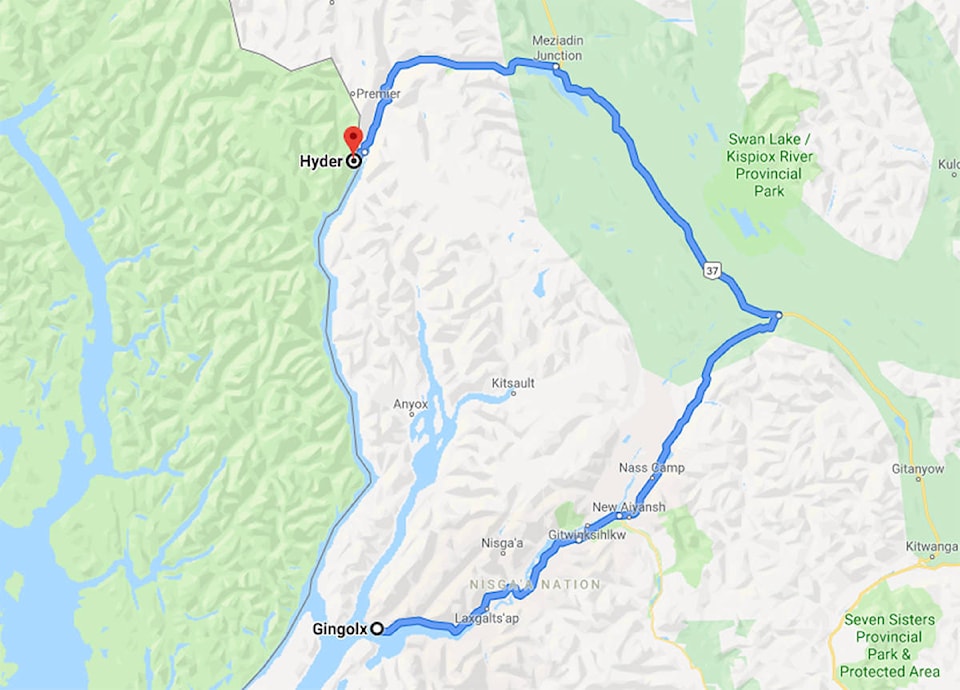Don’t be alarmed if the power goes out for most of the day in the Nass Valley and points north on Saturday — this outage is planned.
BC Hydro says crews will be doing a scheduled power outage on Sept. 14 between 7 a.m. and 7 p.m. for maintenance and system upgrades on an electrical substation used to transform voltage from high to low, or the reverse, using transformers.
The affected areas include all of the Nass Valley from Gingolx to Nass Camp and north to Kitsault as well as north on Hwy37 to Meziadin Lake and reaching into Stewart and Hyder, Alaska.
The outage will impact 1,547 customers, taking out any services using electricity for the day.
“Unfortunately the closer you get to the substation the more people are affected on that line because the power starts at the sub and works its way to the end of the line,” says Dave Mosure.
“Everybody on the line that that piece of equipment feeds, they’re going to be out while we do this maintenance.”
READ MORE: Power restored to 120,000 customers after northern B.C. transmission failure
There are steps customers can take to make sure they’re prepared for an outage. Below are some tips from BC Hydro.
Preparing your home
- Develop a preparedness plan and share it with your family. Be sure everyone knows what to expect and what to do. Have a contingency plan in case power is out for a longer period.
- Contact your regional health authority if you or someone you know has special needs during an outage (e.g., is dependent upon electronic life-support systems).
- Turn off all appliances, especially those that generate heat. This helps prevent injury, damage and fire when the power is restored.
- Make a list of local emergency contact numbers (fire, police, ambulance, etc.). Include 1 800 BCHYDRO (1 800 224 9376) for reporting an outage.
- Prepare an emergency kit and store it in an easy-to-find location. Check regularly to make sure the kit is well stocked and that all equipment is in good working order.
- Use surge protectors to protect sensitive electrical equipment such as computers, DVD players and TVs.
- Include a battery-operated flashlight in your emergency kit to avoid using candles - they can be a fire hazard.
- Use and print out BC Hydro’s home outage preparation checklist to ensure you and your family are ready for an outage.
During an outage
- Never use a camp stove, barbecue, or propane or kerosene heaters indoors. A build-up of carbon monoxide gas in closed areas can be deadly.
- Never plug a portable generator into an electrical outlet. This can cause electrical danger to your neighbours and utility workers.
- Turn off all lights except one inside your home and one outside. The inside light lets you know and the outside light lets our crews know when the power is back on.
- Keep the doors of your refrigerator and freezer closed. Use these tips to keep your food as fresh as possible: Deep freezer - cover the freezer with blankets, quilts or sleeping bags to further insulate the freezer and help keep food frozen longer. Refrigerated food - minimize how often you open the refrigerator. Try placing bags of ice in the fridge, or place food on ice in a cooler or ice chest.
Preparing your business
Know your building
- Make sure you know the location of your meter room and electric service entrance.
- If your building has fuses, know their location and ratings. Keep two spares in case a fuse blows when power is restored.
- Consider installing an emergency lighting system in your meter room.
- Have a portable lamp or flashlight and batteries readily available.
Know your equipment
- Prepare a list of equipment that will need to be turned off during an outage and then reset when power is restored.
- Contact other service providers (phone, security, fire, etc.) for information on how those systems will work during and after an outage.
- If you have three-phase equipment, install a protection device and know how to reset it after an outage has occurred.
Have a plan
- Develop a preparedness plan outlining the operational tasks and responsibilities for your staff.
- Identify your needs for backup electrical generation and battery (Uninterruptible Power Supply) systems.
- Test your backup battery systems, emergency lighting, phone, security and fire protection systems regularly.
- Compile a list of emergency telephone numbers.
- Use and print out BC Hydro’s outage plan for businesses checklist to create a customized plan for your business.
- Prepare an emergency kit and store it in an easy-to-find location.
Prepare your employees
- Make sure your employees know what their responsibilities are during a power outage.
- Ensure that they have access to your site location identification number (SLID) so they can report an outage to BC Hydro if you’re not available.
For more information, call 1-800-BCHYDRO or visit their website.
brittany@terracestandard.com
Like us on Facebook and follow us on Twitter
